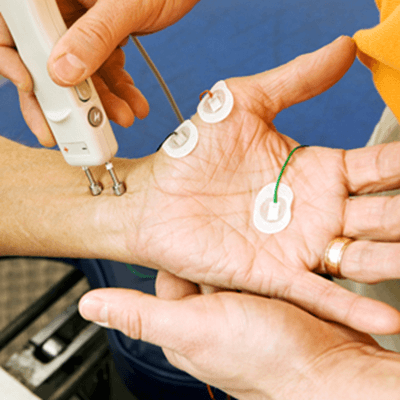EMG Full Form | What is Electromyogram
What is the full form of EMG
EMG: Electromyogram
EMG stands for Electromyogram. It is a diagnostic test which is performed to record the electrical activity of muscles at rest and during contraction. It evaluates the health of muscles and nerve cells that control them. The nerve cells which are called motor neurons send electrical signals (impulses) to muscles that allow muscles to contract. EMG tests how well your muscles respond to electrical signals received from nerve cells (motor neurons).
The EMG translates these electrical signals into graphs, numerical values etc that are interpreted by the specialist. In this test, electrodes are used to transmit or detect electrical signals.

This test has two components: Nerve conduction study and Needle EMG.
Nerve conduction study: It is the first part of this test in which electrodes are placed on the skin to measure the movement and strength of impulses moving between two or more points. It evaluates the ability of nerve cells to send electrical impulses to their respective muscles.
Nerve conduction study:Needle EMG: In this part of the test, a needle electrode is inserted directly into a muscle to record and evaluate electrical activity of that muscle during contraction and rest. It acts like a microphone inserted into the muscle.
Needle EMG:A doctor usually suggests EMG when a person shows the symptoms of a muscle or nerve disorder such as:
- Numbness
- Tingling
- Muscle weakness
- Muscle pain or cramping
- Paralysis
- Tics ( involuntary muscle twitching)
Its results help doctor diagnose nerve disorders, muscle disorders, and other disorders that affect the coordination between nerve cells and muscles such as:
- Nerve damage due to disk compression in the neck or back
- Nerve compression from carpal tunnel syndrome
- Neuromuscular diseases like amyotrophic lateral sclerosis (ALS), muscular dystrophy, poliomyelitis etc.
- Peripheral neuropathy